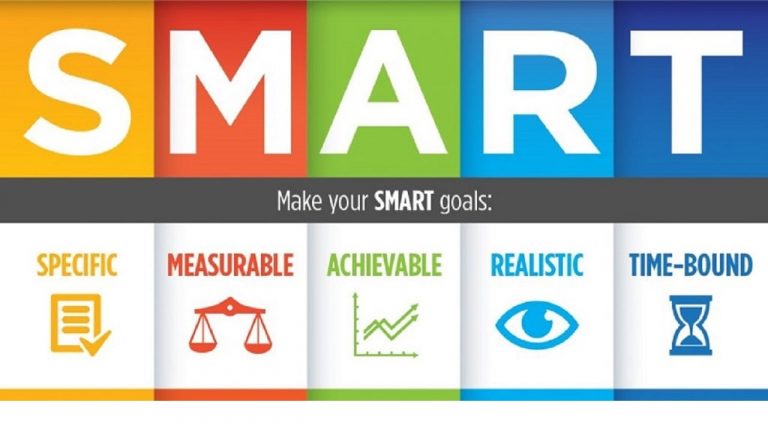What are KPIs?.
Definition according to Wikipedia: “KPI is an indicator that measures and evaluates the performance of a part of a company or the operation of the whole company. Each department in the company will have different KPIs.”
Oxford dictionary definition: “KPI is a quantifiable metric used to assess the success of an organization, its employees, etc., in meeting performance objectives”.
KPIs will help give and provide goals for teams and departments to find as well as important milestones to be able to evaluate progress, detailed information, help everyone in the unit and organization to make better decisions.

What is the importance of KPIs for organizations and businesses?
After understanding what the concept of KPI is, we will learn about the role of KPIs for organizations and businesses. There are many reasons that make KPIs an important and indispensable part of an enterprise's development strategy in the journey to achieving common goals:
Create a link between team members: KPI is used to measure the success of a project or employee's work performance, plays a role in helping the team work in a unified direction, ensuring alignment. teamwork to achieve common goals at work.
Helping businesses adjust at the right time: KPIs will give managers the most realistic and intuitive view of the company's working situation and operations. Especially the risks of financial indicators to timely adjust, keep the business away from bigger losses.
Individually make adjustments: KPIs help employees see clearly their successes and failures, their good and bad points, and make appropriate adjustments, achieving higher efficiency in a better way.
Improve the responsibility of each team member: KPI helps each employee in the group track their progress and work performance by day, month, quarter, year and help managers best manage job.
KPI classification
In fact, there are many different types of KPIs set up for organizations, businesses and individuals, but we will mention some common and widely used KPIs today:
Strategic KPIs
Strategic KPIs will relate to key issues such as costs, revenue, market share, profit ... of the company, it has a great influence and monitors the goals of the business. Leaders will often choose from 1 to 2 strategic KPIs to assess whether the business's performance at any given time is in a good or bad direction. From there, make judgments and adjustments in the most appropriate and effective way.
For example, a company A sets a strategic KPI for the first quarter of 2022 to achieve a revenue of 40 billion. If this revenue milestone is not reached, the partner will withdraw investment capital and important positions such as sales manager will be replaced.
Or a real estate floor B needs to achieve a turnover of 20 billion for September 2022, if the floor does not reach this level, it will mean that the floor will have to stop operating.
Strategic KPIs are often set out directly to leaders and managers. These people need to research and come up with specific policies to achieve the company's strategic KPI goals.
Tactical KPIs
Tactical KPIs will be smaller metrics to help businesses achieve their strategic KPI goals.
For example, a fashion company assigned its marketing department to reach 200,000 followers on the social networking site TikTok in May 2022. If this KPI is achieved, it will not completely determine whether the company's sales will be achieved or not, but it will measure the company's approach to the customer file on TikTok, see if the company is doing it. right communication strategy.
Managers will be assigned strategic KPIs and somehow they use tactical KPIs to ensure employees complete tasks, achieving strategic KPIs set by the company. Tactical KPI is also a factor to consider about the management capacity of leaders.
The thing to keep in mind is that if you achieve your goals on tactical KPIs, it does not mean you will 100% achieve strategic KPIs for many different reasons: tactical KPIs are far from the goals of strategic KPIs, tactical KPIs suggested too easily…
How to define simple KPIs
To determine exactly what a KPI is, ask and answer each of those questions.
For example, if you are a salesperson of real estate company F, assigned a monthly sales KPI, the questions and answers to determine the KPI are:
What is the desired result? Achieved revenue of 4 billion per month.
Why is it important to achieve this KPI goal? Increase the overall revenue of the company, the business is better, get a higher salary.
How to measure performance? Based on monthly revenue growth.
How to achieve the desired results? Develop an effective customer approach strategy, firmly grasp project knowledge for consulting, practice sales skills, etc.
Who is responsible for the business results of the business? Sales Manager
How do you know you have achieved your KPI? The company's revenue is 4 billion VND.
How long does it take to evaluate job KPI performance? Every month.
How to build effective KPIs for employees
Many businesses apply KPIs in human resource management, but not all businesses build and set effective KPIs for their employees. Therefore, how to build KPIs below will become the key for managers:
Define clearly who builds KPIs for employees
First, it is necessary to determine who develops KPIs for employees, because this will affect the effectiveness of the implementation process:
Method 1: Units and departments directly develop KPIs for each job position in that department, under the guidance and support of the human resource management department.
Advantages: KPIs are built with high practicality because the managers of the department will be the ones who know the most about functional activities to build KPIs for each specific position. Feasibility and efficiency will be more guaranteed.
Cons: Objectivity is quite limited because there are cases where departments will set low KPIs to achieve goals.
Solution: After the department heads and departments develop KPIs for departmental employees, it is necessary to get approval from senior management to see if it is appropriate.
Method 2: Senior management will be the ones who give KPIs for each department and department.
Advantages: Objectivity is emphasized, sticking to the common KPI of the whole company.
Cons: The practicality and feasibility are sometimes inappropriate because senior management does not understand the situation and closely follow the work of each specific department or department.
Solution: Before senior management offers a set of KPIs for the department, it is advisable to consult the functional department head to set it up reasonably.

What is KPI's?
The most important thing when setting KPIs is that they are closely aligned with the goals set by the business, the more realistic the better. Based on SMART criteria to evaluate KPIs at work, it is decoded as follows:
S (Specific): Specific goal
M (Measurable): Measurable goal
A (Attainable): An achievable goal
R (Relevant): Actual target
T (Timebound): A goal with a specific deadline
When the given KPIs do not meet the goals in the SMART criteria, it will cause negative impacts such as low efficiency assessment, affecting the company's set goals, failing to meet business expectations.












Replies to This Discussion